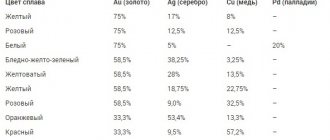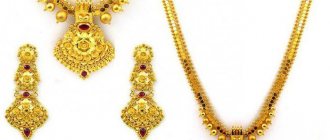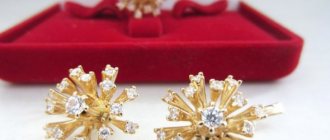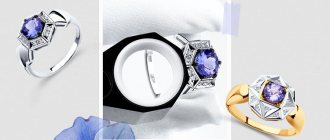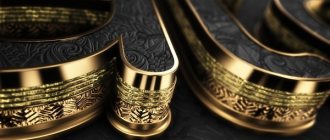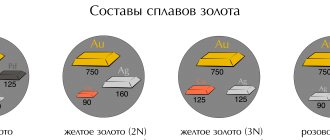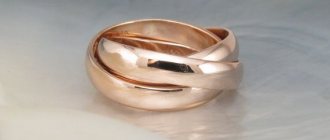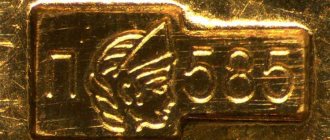Due to its unique properties, gold is the most popular material for making jewelry. A watch, in general, cannot be fully called a decoration, since it is a functional device for measuring time. However, recently they are increasingly playing the role of a beautiful and status accessory. Gold, the use of which in watchmaking has a long history, turns watches into real jewelry.
The emergence of modern watches: the Swiss watch industry
First of all, thanks to Swiss watchmakers who established mass production, watches have become less luxurious. They are no longer created as works of art. Watches have gone from being a piece of goods for a select few to becoming a product of relatively mass consumption.
However, the role of gold has increased even more, since the gold case has become, in fact, the only decoration of the complex mechanisms located inside it. Gold has become a convenient material for watch manufacturers due to its ease of processing. The reduction in the size of watches and the development of metal processing technologies have made it possible to spend less gold per watch, and, therefore, make them cheaper. Buyers really liked gold watches because they had a beautiful and solid appearance.
Accurate, reliable and reasonably priced, Swiss watches have become very popular. The Swiss watch industry is actively developing not only in Geneva , but also in the cities of La Chaux-de-Fonds and Neuchâtel . One of the world's largest metallurgical corporations, Metalor , was founded in Switzerland in 1852 as a company for the production of gold watch cases and still works for the watch industry.
Swiss watch brands are modern leaders with centuries-old traditions
Today, most gold watches are still made in Switzerland. Most of the gold bracelets are made there and in Italy. Fifteen Swiss companies produce gold watch cases.
There are currently 188 watch brands . Surely everyone has heard such famous names as Girard-Perregaux, Patek Philippe, Michel Parmigiani, Breguet, Longines, Rolex and many others, whose history goes back more than 100 years. Some continue to work in the old tradition, producing only a few hundred or thousand handmade watches per year. And some, like Rolex, produce several hundred thousand gold watches a year. Most cases are made of 18-karat gold (750), but for Germany, England and the USA cases of 14-karat gold (585) are supplied.
Gold cases for women's watches can weigh as little as 8 grams. But gold Rolex watch cases, which account for the largest share of the use of this metal, usually weigh at least 40 grams. This should also include the weight of gold watch bracelets. Thus, according to various estimates, about 30 tons of gold per year are used in Switzerland alone for the needs of the watch industry.
JEWELRY WATCHES | Watches made in Russia. History of Russian watches | History of wristwatches. How did wristwatches appear? | Watches “made in the USSR” | Watch factories in the USSR. Main Soviet watch brands
Share this article with your friends
Works by designers from the JEWELIRUM catalog
- Co.Cos Jewelry
- Co.Cos Jewelry
- Taiga Jewelry, Tomsk
- Taiga Jewelry, Tomsk
- Ilya Maksimov, Crimea
- Ilya Maksimov, Crimea
- UBIRING
- UBIRING
- Diamonds are Forever
- Diamonds are Forever
- Rings in natural style, Sergacheva Jewelery
- Earrings with pearls, Sergacheva Jewelery
- Cabochon ring, Minty Sky
- Fly earrings, Minty Sky
- Ring, Precious Park
- Ring, Precious Park
- Snake skin ring, Stoyanova Jewelery
- Chain earrings, Stoyanova Jewelery
- Children's pendant - stick, Matthew&Daniel
- Pendant for a child, Matthew&Daniel
- Bracelet, Svetlana Subbotina
- Ring with Slavic symbols, Svetlana Subbotina
- Indian style ring, Anna Goffman
- Indian style ring, Anna Goffman
- Earrings, ISTA
- Geometric ring, ISTA
- Earrings with enamel, PNJewelry
- Ring with enamel, PNJewelry
- Ring, Khramtsova Jewelry
- Ring, Khramtsova Jewelry
- Wedding rings to order, obruchalki.com
- Wedding rings to order, obruchalki.com
- Earrings, Yuri Bylkov
- Earrings, Yuri Bylkov
- Titanium bracelets, LanaMuransky
- Titanium pendant, LanaMuransky
- Brooch Elephant (after Salvador Dali), THING
- Ring Veil, THING
- Mace earrings, VLADIMIR MARKIN
- Cufflinks, jewelry mechanics, VLADIMIR MARKIN
- Drop-shaped ring, EKATERINA TOLSTAYA
- Drop-shaped earrings, EKATERINA TOLSTAYA
- Necklace with amber, LETA
- Earrings with amber, LETA
- Children's earrings, combinable, FASHBY
- Children's earrings, combinable, FASHBY
- Ring of architectural form, Elizaveta Malafeevskaya MANU_L
- Architectural bracelet, Elizaveta Malafeevskaya MANU_L
- Set Ginkgo Leaf, SHABUT JEWELLERY
- Brooch Wearable porcelain, SHABUT JEWELLERY
- Architectural ring, GEOMETRY
- Brooch, porcelain, GEOMETRY
- Necklace made of polymer clay, LICORNE ART
- Brooch made of polymer clay, LICORNE ART
- Ring, avant-garde, VALERY SEREDIN
- Bracelet, avant-garde. VALERY SEREDIN
- Wooden set, Scandinavian/Japanese minimalism, VLADIMIR SHESTAKOV
- Ring, Scandinavian/Japanese minimalism, VLADIMIR SHESTAKOV
- Earrings, TON ANT
- Ring, TON ANT
- Architectural ring, ANCHOR
- Architectural necklace, ANCHOR
- Earrings, GOHFELD JEWELLERY
- Necklace, GOHFELD JEWELLERY
- Massive ring, YAKISCHIK
- Designer jewelry, YAKISCHIK
- Architectural ring, ONE DAY ART
- Architectural ring, ONE DAY ART
- Brooch, bionics, VALERIYA MARKOVA (TESSA)
- Unclosed ring, bionics, VALERIYA MARKOVA (TESSA)
- Ring, bionics, BEAVERS
- Earrings, bionics, BEAVERS
- Earrings, asymmetry, VAGANOVA JEWELRY
- Airplane ring, VAGANOVA JEWELRY
- Flower ring, ALCHEMIA JEWELLERY
- Set, ALCHEMIA JEWELLERY
- Pendant-cat, ethnic, STUDIO OF ILYA AND VERA PALKIN
- Earrings, STUDIO OF ILYA AND VERA PALKIN
Marking features
In Soviet times, many watches were made with the addition of gold. Such models cost a lot, but there were also fakes. Not all yellow watch models were made with the addition of precious metal. To understand whether a watch is expensive or not, you should look at the brand.
There are several types of markings, and if you understand their features, you can learn to understand how thick the coating is on a product:
- "Au."
- "Au 5».
- "Au 10."
- "Au 12.5".
- "Au 20".
We recommend reading: What will happen to the price of gold in 2015?
The amount of gold plating was measured in microns. As a rule, “Au 5” and “Au 10” coatings were used on Soviet watches. You should look for the mark near the wheel that wound the watch, or on the case behind the lug. In the Soviet Union there were certain brands of watches that were always made with gold plating; now such pieces are highly valued not only because of the precious metal content, but also as an artifact of history.
These are models such as:
- "Dawn";
- "Lighthouse";
- "Pennant";
- "Rocket";
- "Dream";
- "Glory";
- "Commander's";
- "Ray";
- "ZiM".
There were also examples that were made entirely of gold (a corresponding certificate was issued for such watches). You can recognize such watches by the numbers 375, 500, 585, which indicate the purity of gold.
Worth knowing! The mark was placed only on those parts that were coated with gold plating. That is, if the marking is only near the winding mechanism, but is not on the strap, then this means that the belt is made of ordinary metal.
When did gold first appear on watches?
The tradition of making watch cases from gold goes back a long way. The famous inventory of the jewels of Queen Elizabeth I of England , dating from about 1600, includes the following items: "a small watch of gold, set with variegated enamel equally on both sides," "a small watch in crystal, lightly set in gold, with the image of her Majesty upon it." The first mechanical clocks began to appear on the towers of cities and large monasteries at the end of the 13th century . They had only one hand to mark the hours. However, the clocks also showed the dates of religious events, played melodies and were often equipped with mechanical figures demonstrating various scenes. In such watches, gold was used to decorate dials, hands and figures. It turned out to be an extremely convenient material for these purposes, since it did not lose its shine and color over time.
In Florence, the Cathedral of Santa Maria del Fiore, or Duomo , houses one of the oldest clocks in the world. The mechanism was created in 1443 by the Florentine master Angelo di Niccolò . The clock face is painted on the wall. The golden arrow moves by a mechanism hidden in the wall.
Reinforce the rosé
The first to begin to conjure gold, of course, was Rolex (by the way, the largest consumer of gold in the world, producing about 250,000 gold watches a year). Few Rolex wearers dared to leave their gold Oysters unattended on the beach when they went swimming, fortunately the case is waterproof. As a result, very soon the gold of the case and bracelet faded and even changed shade. It was then that Rolex came up with the material Everose, which is a patented gold alloy that does not lose tone when exposed to sea or chlorinated water. To make the alloy brighter, copper was added to it and the pink color was fixed with a fair amount of platinum. Everose was then certified as an 18k gold alloy. “Eternal Pink” is used in the Oyster Perpetual Day-Date, Lady-Datejust Pearlmaster, Cosmograph Daytona and Yacht-Master models of both generations. This year, the Yacht-Master I was released in Everose case diameters of 47 mm and 40 mm. This model debuted a new Oysterflex bracelet, combining the flexibility and comfort of rubber with the strength and reliability of metal.
Not long ago, Rolex invented another type of gold - Gold Crystals. Crystalline gold has a very unusual surface with transparent pyramids that shimmer intricately, refracting light. In the Rolex Oyster Perpetual Cosmograph Daytona, they cover the chronograph's 30-minute and 12-hour counters, as well as the seconds subdial.



